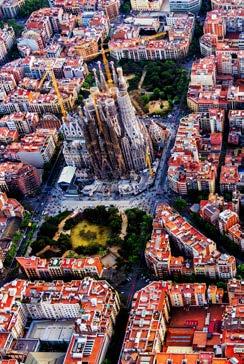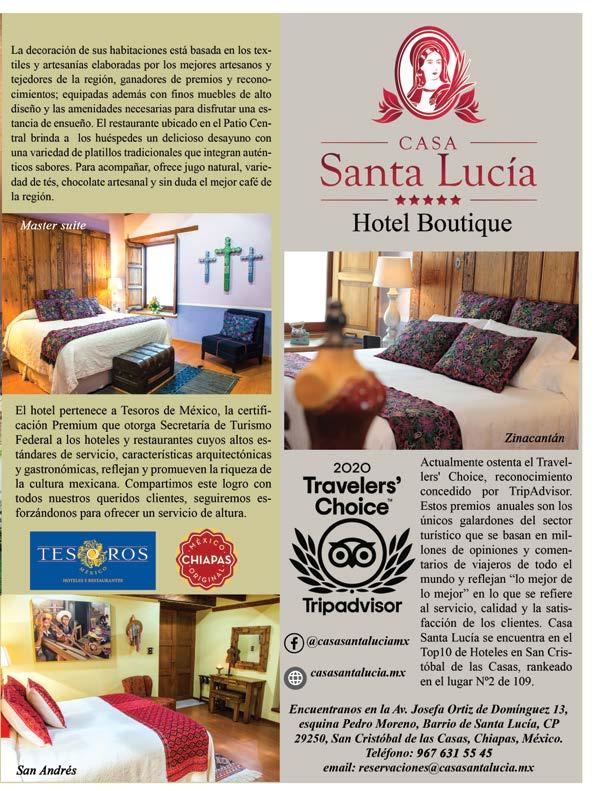
4 minute read
BARCELONA
Barcelona, also known as Barna (not Barça, that is the football team) is a city on the coast of Spain, capital of the autonomous community of Catalonia; its official languages are Catalan and Spanish. You can get there by plane, with a fairly large international airport, Barcelona-El Prat handles around 50 million passengers per year; by train, since it has a high-speed rail line with links to all the major cities in Spain, France, and the rest or Europe; by cruise, car or bus.
Where to begin? Barcelona has something for everyone, whether you want to go to museums, visit churches, walk around, just party, or all of them; it’s one of those cities where you can stay for two weeks, and you wouldn’t be bored.
Advertisement
The best time to visit Barcelona is around fall, unless you want some beachy and sunny weather, then you should definitely travel during summer (be aware of multitudes and a 35°C weather).
One of the few downfalls of Barcelona, is that many of the famous tourist spots are spread all throughout the city, so you’ll have to plan ahead to visit everything you want to. Another option is to catch a tour, there are a lot, and some of them are even free, just google “Barcelona free walking tour”, and at the end, tip your guide, since is the only salary they get.
It was founded as a Roman city, so expect to see everything from Roman vestiges, to medieval buildings, to one of the largest stadiums in Europe, the Camp Nou, to many community gardens, developed by social centers and autonomists.
The city is separated into quite different districts and neighborhoods, which you can visit by public transport, train, bus and metro; taxi, bike or walking.
Ciutat Vella: also known as Gothic Quarter, is the oldest part of the city. Getting lost in the Gothic Quarter is one of the best thigs you could do in
Barcelona. Eating in Las Ramblas can be quite expensive, as it has many tourist traps, but you can always find a tapas and beer restaurant, where almost every dish is 1 Euro. Don’t forget to visit the Cathedral, a building that took more than 2 centuries to finish.
L’Eixample: the “newer” part of Barcelona, if you want to go out, this is the place for you, you can find the best bars and clubs in the city. This is where the modernist movement began, so don’t forget to visit its buildings; Casa Batlló, Casa Milla, and, of course, la Sagrada Familia. Also, it is a very LGBTQ+ friendly neighborhood, so expect to find amazing clubs.
Barceloneta: and old fisherman town, home to the nearest beach to Barcelona’s downtown. Popular with families and tourist that don’t want move a lot. Take advantage of its proximity to the sea and go to the market to buy some fresh fish or eat at any restaurant nearby.
Les Corts District: an important financial and commercial center, filled with businesspeople, hotels and restaurants, but not many tourist sights. You can find here a big shopping mall, called L’Illa.
Montjuic: it is basically known for the splendid views of the city, views you get as you go up the mountain. Its main tourist attractions are a magic fountain; Poble Espanyol, an open-air architectural museum, built for the 1929 Barcelona International Exposition; and MNAC, which is the National Art Museum of Catalonia, where you can find Romanesque, Gothic, Renaissance, Baroque and Modern Art, being one of the largest museums in Spain. Don’t forget to visit the park, being the largest of Barcelona’s.
TOP 5 THINGS TO DO:
even buried there, in the crypt. It’s been under construction since 1882, relying on private donations to continue its construction and it is anticipated to be completed by 2026, centenary of Gaudi’s death. If you go, you should consider buying your tickets online, as queues can be crazy; also, don’t forget to rent an audio guide or to go with a guide.
Go on April 23rd: Saint Jordi’s Day, also known as the Feast of Saint George. Saint Jordi was a Roman soldier, and the story says that a dragon was causing panic in Silene, and people wanted to sacrifice the king’s daughter to keep it fed, but George decide to slay the dragon with a lance, and from its blood was born a red rose. Nowadays, to celebrate, boys give girls a rose, and girls give boys a book.
Visit Camp Nou: home stadium of FC Barcelona since 1957, also the largest stadium in Spain and Europe, and fourth in the world in capacity. To watch any game here is amazing, but if you can score a ticket to a Barcelona-Real Madrid match, it will be one of the most amazing experiences of your life; and even if you don’t like football, you can tour the stadium and visit its museum.
Walk around La Boqueria: large public market located in Ciutat Vella, operating since 1840, with an average of 40,000 visitors every day, voted by CNN as the best food market in the world. You can find food, fresh produce, handicrafts, farmer’s shops and products from all around the world. La Boqueria has many places to enjoy Catalan cuisine, so keep your eyes open.
Find yourself in Laberint d’Horta: one of the cities hidden gems, perfect if you’re tired of tourist traps and lots of people. It is located in Barcelona’s Parc, built in 1791, with Neoclassical inspiration. With over 500 meters of twist and turns for you to get lost, find something or someone, or just find yourself. In the center you’ll find a statue of Eros, God of Love, so you might want to get there with your significant other.
As we told you, two weeks are not enough to visit the city, as it is a patchwork of architectural styles, history, gastronomy, and people.








